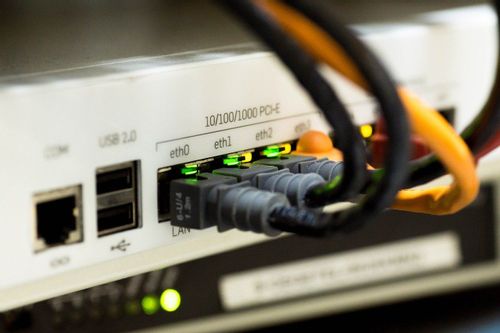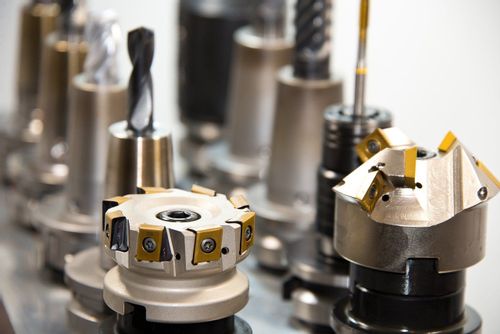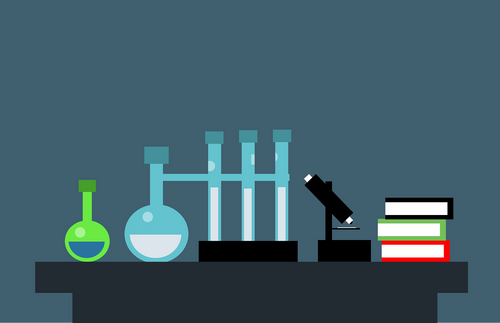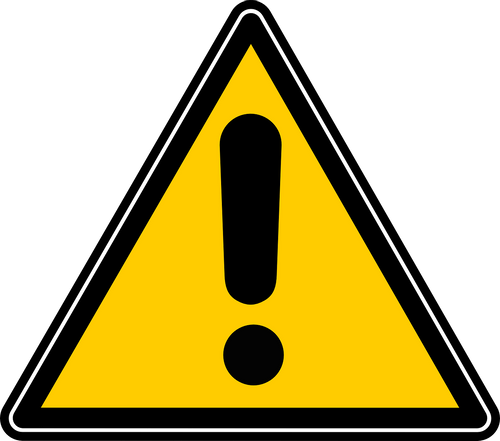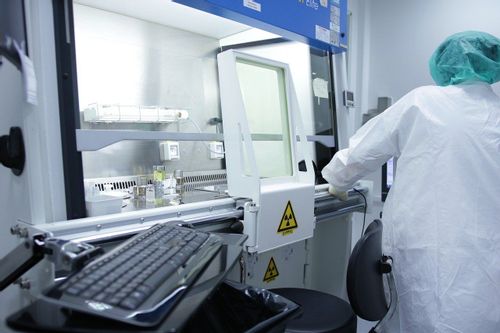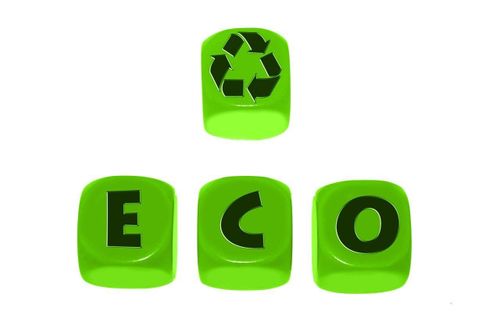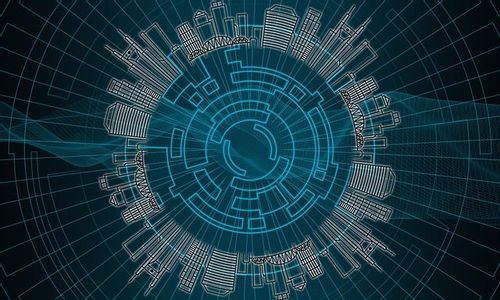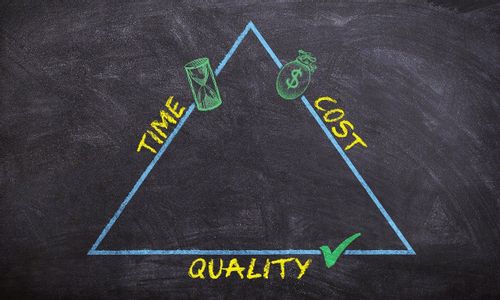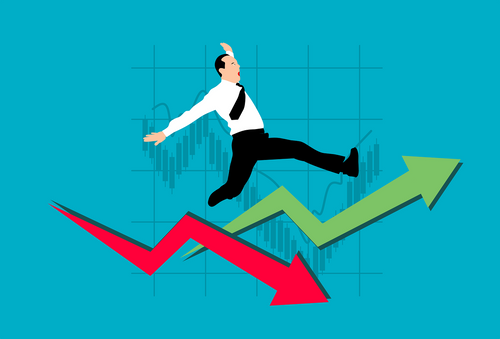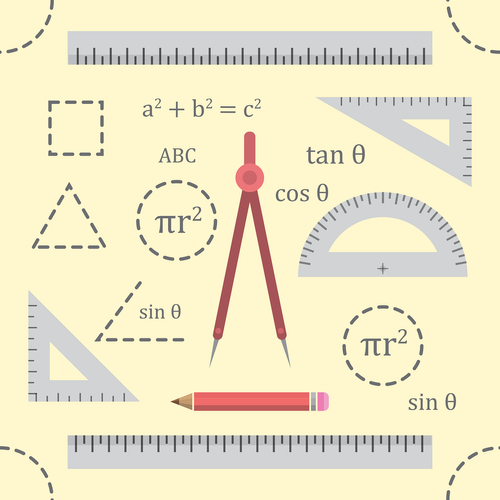Standards Packages
iTeh together with SIST has developed and compiled a comprehensive collection of standard packages to support your standard requirements. Our packages cover an array of content that includes quality management, risk management, road vehicles, machine safety, and much more. With over 200 packages to choose from, you are sure to find a collection to suit your standard needs.
Latest Standards
This document specifies requirements and test methods of walking sticks with three or more legs used as assistive products for walking, manipulated by one arm, without accessories, unless specified in the particular test procedure. This document also gives requirements related to safety, ergonomics, performance and information supplied by the manufacturer, including marking and labelling. The requirements and tests are based on every-day use of walking sticks with three or more legs as assistive products for walking for a maximum user mass as specified by the manufacturer. This document is for walking sticks with three or more legs specified for a user mass of no less than 35 kg. This document is not applicable to walking sticks with three or more legs with underarm or forearm support or with moving parts such as a universal joint.
- Standard18 pagesEnglish languagesale 15% off
- Standard19 pagesFrench languagesale 15% off
IEC TS 60034-31:2021 provides a guideline of technical and economical aspects for the application of energy-efficient electric AC motors. It applies to motor manufacturers, OEMs (original equipment manufacturers), end users, regulators, legislators and other interested parties.
This document is applicable to all electrical machines covered by IEC 60034-1, IEC 60034-30 1 and IEC TS 60034-30-2.
a. references to relevant standards have been updated;
b. global market data for industrial motors have been updated.
- Technical specification68 pagesEnglish languagesale 10% offe-Library read for1 day
- Amendment12 pagesEnglish languagesale 10% offe-Library read for1 day
This document specifies a method for determining the hardenability of steel by end quenching (Jominy test) by using a test piece 25 mm in diameter and at least 100 mm long.
By agreement and for a defined field of application, the test described in this document can be replaced by the calculation of the Jominy curve according to an accepted mathematical model.
- Standard27 pagesEnglish languagesale 10% offe-Library read for1 day
This document specifies the safety requirements and measures for single spindle vertical moulding machines (defined in 3.1), capable of continuous production use and hereinafter referred to also as “machines”.
The machines are designed to cut solid wood and material with similar physical characteristics to wood.
This document deals with all significant hazards, hazardous situations and events as listed in Annex A, relevant to the machines when they are operated, adjusted and maintained as intended and under the conditions foreseen by the manufacturer including reasonably foreseeable misuse. Transport, assembly, dismantling, disabling and scrapping phases have also been taken into account.
This document is also applicable to machines fitted with one or more of the following devices/additional working units, whose hazards have been dealt with:
a) device to adjust the arbor vertically;
b) device to tilt the arbor;
c) device to fit a manually operated tenoning sliding table;
d) glass bead saw unit;
e) adjustable table insert;
f) device for changing the direction of rotation of the spindle;
g) device for fixing shank mounted tools on the arbor;
h) interchangeable arbor;
i) quick tool/arbor change system;
j) demountable power feed unit;
k) support for the demountable power feed unit with power-driven adjustments.
This document does not apply to
— machines equipped with outboard bearings,
— machines equipped with powered movements of a front extension table and/or a tenoning sliding table.
This document is not applicable to machines intended for use in potentially explosive atmospheres or to machines manufactured prior to the date of its publication.
- Standard71 pagesEnglish languagesale 10% offe-Library read for1 day
This document specifies:
a) the field of application for mechanical mixing valves for use in a supply system of Type 1 (see Figure 1);
b) the dimensional, leak tightness, pressure resistance, hydraulic performance, mechanical strength, endurance, corrosion resistance of the surface of the product, sequence of testing and acoustic characteristics with which sanitary tapware products including their components (flexible hose, pull out spray) need to comply where applicable;
c) test methods to verify the characteristics.
The tests described in this document are type tests (laboratory tests) and not quality control or factory production control (FPC) tests carried out during manufacture.
This document applies to draw-off taps (mechanical mixing valves) for use with sanitary appliances installed in rooms used for personal hygiene (cloakrooms, bathrooms, etc.) and for food preparation (kitchens), i.e. for use with baths, wash basins, bidets, showers and sinks.
Figure 1 shows a supply system of Type 1 with a pressure range of (0,05 to 1,0) Mpa [(0,5 to 10) bar].
The conditions of use and classifications are given in Table 1.
Table 1 - Conditions of use
Figure 1 - Supply system of Type 1 with a pressure range of (0,05 to 1,0) MPa [(0,5 to 10) bar]
- Standard53 pagesEnglish languagesale 10% offe-Library read for1 day
IEC 61000-2-4:2024 is available as IEC 61000-2-4:2024 RLV which contains the International Standard and its Redline version, showing all changes of the technical content compared to the previous edition.
IEC 61000-2-4:2024 is related to conducted disturbances in the frequency range from 0 kHz to 150 kHz. It gives compatibility levels in differential mode (L-L and L-N) for industrial locations, with a nominal voltage up to 35 kV and a nominal frequency of 50 Hz or 60 Hz.
NOTE 1 Industrial locations are defined in 3.1.8.
Power distribution systems on ships, aircraft, offshore platforms and railways are not included.
NOTE 2 See also Annex E. The compatibility levels specified in this document apply at the in-plant point of coupling (IPC). The level of the low-frequency disturbances at the terminals of equipment receiving its supply from the IPC is generally assumed to be similar to the disturbance level at the IPC itself. However, in some situations this is not the case, particularly when a long feeder is dedicated to the supply of a particular load, or when a disturbance is generated or amplified within the installation of which the equipment forms a part.
Compatibility levels are specified for the types of low-frequency electromagnetic disturbances expected at any in-plant point of coupling (IPC) within industrial locations, for guidance in the definition of:
a) limits for disturbance emissions in industrial power distribution systems (including the planning levels defined in 3.1.5);
NOTE 3 A very wide range of conditions is possible in the electromagnetic environments of industrial networks. These are approximated in this document by the three classes described in Clause 4. However, it is the responsibility of the operator of such a network to take account of the particular electromagnetic and economic conditions, including equipment characteristics, in setting the above-mentioned limits.
b) immunity levels for the equipment within these systems.
The disturbance phenomena considered are:
- voltage deviations;
- voltage dips and short interruptions;
- voltage imbalance;
- power-frequency variations;
- harmonics up to order 40;
- interharmonics up to the 40th harmonic;
- voltage components above the 40th harmonic up to 150 kHz;
- DC component;
- transient overvoltages.
The compatibility levels are given for different classes of environment determined by the characteristics of the supply network and loads.
NOTE 4 Compatibility levels at the point of common coupling (PCC) on public networks are specified in IEC 61000‑2‑2 for low-voltage networks and IEC 61000‑2‑12 for medium-voltage networks. IEC TR 61000‑3‑6 and IEC TR 61000‑3‑7 describe the approach of power distribution system operators to the limitation of emissions from installations and large loads.
This third edition cancels and replaces the second edition published in 2002. This edition constitutes a technical revision. This edition includes the following significant technical changes with respect to the previous edition:
a) introduction of new classes 2a, 2b and 2L (former class 2);
b) modification of existing compatibility levels for class 3;
c) addition of compatibility levels in the frequency range 2 kHz to 150 kHz;
d) addition of compatibility levels using a new quantity: partial weighted harmonic distortion (PWHD).
- Standard50 pagesEnglish languagesale 10% offe-Library read for1 day
This European Standard gives the specifications and the test methods for creosotes for industrial wood preservation.
Different grades of creosote are used depending on the desired properties of the treated wood.
WARNING - The use of this European Standard may involve hazardous materials, operations and equipment. This standard cannot address all of the safety implications associated with its use. It is the responsibility of the user of this standard to establish appropriate health and safety practices and assess the applicability of regulatory limitations prior to use. The warnings to use are covered in annex C.
- Standard20 pagesEnglish languagesale 10% offe-Library read for1 day
IEC 60079:2024 contains the specific requirements for the design of electrical systems, selection, installation and the required initial inspection of electrical installations of Ex Equipment in, or associated with, explosive atmospheres including requirements for documentation and personnel competency. These requirements are in addition to the requirements for installations in non-hazardous areas. This document applies to all electrical Ex Equipment including fixed, transportable, portable and personal, and installations, permanent or temporary. This document does not apply to: • electrical installations in mines susceptible to firedamp; • inherently explosive situations and dust from explosives or pyrophoric substances (for example explosives manufacturing and processing); • rooms used for medical purposes; • electrical installations in areas where the hazard is due to flammable mist; and • installation of non-electrical Ex Equipment (unless being part of an equipment assembly according IEC TS 60079-46). No account is taken in this document of the toxic hazards that are associated with flammable gases, liquids and dusts in concentrations that are usually very much less than the lower flammable limit. In locations where personnel could be exposed to potentially toxic concentrations of flammable material, appropriate precautions are necessary. Such precautions are outside the scope of this document. This sixth edition cancels and replaces the fifth edition published in 2013. This edition constitutes a technical revision. Edition 6 is a major restructure and introduces a number of technical changes from the previous edition (2013), see Table 1 of the foreword for detailed information.
- Draft143 pagesEnglish languagesale 10% offe-Library read for1 day
This document specifies requirements and recommendations for tactile/haptic hardware and software interactions. It provides guidance on the design and selection of hardware, software and combinations of hardware and software interactions, including: — the design or use of tactile/haptic inputs, outputs and/or combinations of inputs and outputs, with general guidance on their design or use as well as on designing or using combinations of tactile and haptic interactions for use in combination with other modalities or as the exclusive mode of interaction; — the tactile/haptic encoding of information, including textual data, graphical data and controls; — the design of tactile/haptic objects; — the layout of tactile/haptic space; — interaction techniques. The recommendations given in this document are applicable to a variety of tactile/haptic devices, representing the real world or virtual or mixed realities (e.g. exoskeletons, wearables, force feedback devices, touchables, tangibles) and stimulation types (e.g. acoustic radiation pressure, electrical muscle stimulation) and they can also be found in virtual and augmented environments. This document provides general information about how various forms of tactile/haptic interaction can be applied to various user tasks. This document does not include guidance on the role of walking in virtual or mixed realities for tactile/haptic interaction. NOTE It is recognized that some interactive scenarios can be constrained by the limitation that a real workspace is to be modelled in a virtual environment. Objects can be in suboptimal positions or conditions for tactile/haptic interaction by virtue of the situation being modelled.
- Standard26 pagesEnglish languagesale 15% off
- Standard28 pagesFrench languagesale 15% off
This document describes clamp blocks for tube lines having axial alignment, with or without electrical grounding, designed for a range of tube outside diameters from 4 mm to 36 mm selected from ISO 2964. This document specifies the dimensions of clamp blocks and the test methods for qualification testing.
- Standard12 pagesEnglish languagesale 15% off
This document specifies requirements and test methods for the performance of materials and readymade garments for protection against the effects of precipitation (e.g. rain, snowflakes), fog and ground humidity. Garments for protection against other effects than precipitation (e.g. water splashes, waves) are excluded from this document. The protective effects and requirements of footwear, gloves and separate headwear are excluded from the scope of this document.
- Standard12 pagesEnglish languagesale 15% off
- Standard13 pagesFrench languagesale 15% off
This document specifies a tomodynamometer cut test method and related calculations, for use on materials and assemblies designed for protective clothing, including gloves. The test determines resistance to cutting by sharp edges, such as knives, sheet metal parts, swarf, glass, bladed tools and castings. When this document is cited as a test method in a material or product requirement standard, that standard contains the necessary information to permit the application of this document to the particular product. This test does not provide data on the resistance to penetration by pointed objects such as needles and thorns, or the point of sharp-edged blades. The test described in this document is not considered suitable for testing materials made from chain mail and metal plates. The text of this document does not include provisions for the safeguard of the operator.
- Standard22 pagesEnglish languagesale 15% off
- Standard23 pagesFrench languagesale 15% off
- Amendment9 pagesEnglish languagesale 10% offe-Library read for1 day
This document provides design criteria and test methods to evaluate the removability of shrink labels applied to PET bottles when the packaging supplier intends that the shrink label is to be separated by the consumer or recycling facility, including: a) design criteria such as visual indications of the starting point of separation, finger tab or initiation cuts, label material, shape of bottle, hole size and spacing between holes of perforated shrink sleeves, perforated line, and a tool for improving removability; b) test methods for removability including information on preparing samples and panels, a test procedure and an evaluation method. This document is applicable to packaging suppliers that want to help consumers to easily separate shrink labels from PET bottles and effectively recycle PET bottles during waste collection.
- Standard8 pagesEnglish languagesale 15% off
IEC 63339:2024 specifies the unified reference model for smart manufacturing (URMSM) using a terminology and structure, and establishes criteria for creating reference models, as specializations, that support smart manufacturing. The terminology and structure comprise a set of common modelling elements, their associations, and conformance criteria. These common modelling elements address aspects and perspectives of products and production and their lifecycle considerations. The URMSM enables an approach for creating multiple models based upon a reference model that is sufficient for understanding significant relationships among entities involved in smart manufacturing (SM) and for the development of standards and other specifications. The URMSM specifications in this document accommodate consistent, coherent, compatible specializations for relevant aspects of manufacturing systems consisting of equipment, products, and services within the domain of manufacturing. Provisions of this document are applicable for a new smart manufacturing reference model (SMRM) or elaboration of existing SMRM capabilities, for example, improving capabilities for analysis of opportunities and synthesis of technological advances, and improving interoperability of new and existing systems. This document is not intended to prescribe interoperability considerations or data schemas of models. Standardization of content relative to models will be the subject of other standards and texts specific to those model domains.
- Draft89 pagesEnglish languagesale 15% off
This document is applicable to vehicles operating on tram networks.
This document gives design requirements and guidance in order to ensure visibility and operability of screens, controls and indicators in the cab in all operating conditions (day, night, natural or artificial lighting).
It covers four aspects:
- the characteristics of the displays, controls and indicators in order to ensure proper visibility: i.e. range of luminance and contrast as well as the possibility of adjustment of perceived brightness;
- the requirements for the location of the displays, keyboards, controls and indicators in the cab and on the driver’s desk: i.e. position, angle of visibility, etc. with consideration of the normal driving position and the working environment (windscreen, natural or artificial lighting in the cab, unwanted glare and reflections, etc.);
- the characteristics and requirements for the location of microphones and loudspeakers;
- design of symbols.
NOTE All element numbers within the text refer to Table B.1.
This document does not apply to refurbishment of existing vehicles. This document is not intended to be applicable to driver's auxiliary desk, except for 5.3.10, Clauses 6, 8, 9 and Tables B.1, C.1.
- Standard42 pagesEnglish languagesale 10% offe-Library read for1 day
This document provides guidance on aspects of the design of human-system interaction, including conceptual design, user-system interaction design, user interface design and navigation design for interactive systems.
This document applies to all design and development approaches and methodologies, including human-centred design, object-oriented, waterfall, human factors integration (HFI), agile and rapid development.
It is intended for the following types of users:
— user interface designers, who will apply the guidance during the development process;
— developers, who will apply the guidance during the design and implementation of system functionality;
— evaluators, who are responsible for ensuring that products meet the recommendations;
— designers of user interface development tools and style guides to be used by user interface designers;
— project managers, who are responsible for managing development processes.
- Standard34 pagesEnglish languagesale 10% offe-Library read for1 day
- Standard1 pageEnglish languagesale 15% off
This document describes a set of useful activities, tasks, methods, and practices that acquirers of software and related services from unrelated (external) suppliers can apply to help ensure an efficient and effective acquisition of software or software services. These practices can be applied in competitive and in sole source procurements, regardless of the type, size, complexity, and cost of the acquisition. The document can be applied to software that runs on any computer system regardless of its size, complexity, or criticality. The software supply chain can include integration of off-the-shelf (OTS), custom, software as a service (SaaS), or open-source software. Software services can include software development and sustainment (maintenance), integration, verification (testing) and operation. Security and safety are included as attributes to be considered during the acquisition. However, specific requirements for acquisition of information assurance (security), safety, and cloud services are not included.
- Standard81 pagesEnglish languagesale 15% off
Benefits

Full Standards Solution
Our catalog includes not only latest standards but also full meta information about related standardization project lifecycle.

Cost Effective
Our PRICE MATCH GUARANTEE policy with multi-level volume discounts gives our clients the best option in the market. In addition, you can get access to the standards for 3, 10, or 30 days.

Stay Notified
Get alerted to the latest revisions and new standards in the Weekly Newsletter. Standards are constantly changing. Don’t miss a revision that can impact your business.
About Us
iTeh Inc is a software development and IT consulting team of professionals who provide consulting, development and implementation of solutions for all types of businesses.
In cooperation, with the Slovenian Institute of Standardization (SIST), we create a unique solution that covers all aspects of the lifecycle of Standardization organizations. iTeh Standards is a part of the solution that helps SIST to provide and sell their products to Customers.
iTeh Standards Store is an evolving project, our goal is to build long-term relationships with our customers. We believe in delivering quality services to solve our customers' challenges and define success by exceeding our customers' expectations. We are always ready to listen and our experience allows us to provide our customers with helpful effective suggestions. You can contact us by email.
We are committed to providing the best possible experience for our customers.
Compliance with international standards is increasingly becoming one of the key competitive advantages in the global market. Our company creates all conditions for the most comfortable implementation of new documents and norms in the processes carried out by your organization. Some of the key advantages of working with us are:
- Cost-effective - multi-level discounts and permanent updates of the functions give our clients the best option on the market.
- e-Library - access to standards for a period of time of your choice. It is a cost-effective solution for keeping updated with the newest standards.
- Company-wide documents - create a company account and connect all employees with access to purchased standards, e-Library documents, and packages.
- All in one spot - all purchased standards are kept in one place with controlled access by the account administrator.
- Client-centric - providing quality consulting is the prerogative and incentive to create new products that accompany your success and scale.
- 24 / 7 client support
We are dedicated to building mutually beneficial and long-term relationships with our clients. That is why our team focuses on creating services to help our customers develop and achieve new productive results.








